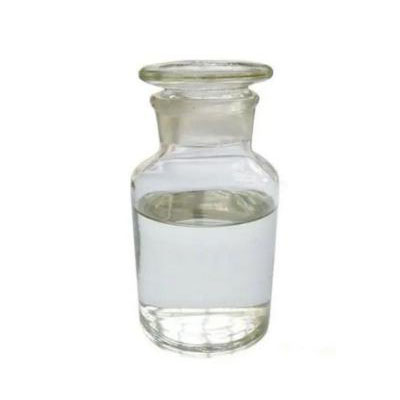- English
- Español
- Português
- русский
- Français
- 日本語
- Deutsch
- tiếng Việt
- Italiano
- Nederlands
- ภาษาไทย
- Polski
- 한국어
- Svenska
- magyar
- Malay
- বাংলা ভাষার
- Dansk
- Suomi
- हिन्दी
- Pilipino
- Türkçe
- Gaeilge
- العربية
- Indonesia
- Norsk
- تمل
- český
- ελληνικά
- український
- Javanese
- فارسی
- தமிழ்
- తెలుగు
- नेपाली
- Burmese
- български
- ລາວ
- Latine
- Қазақша
- Euskal
- Azərbaycan
- Slovenský jazyk
- Македонски
- Lietuvos
- Eesti Keel
- Română
- Slovenski
- मराठी
- Srpski језик
How does Delta Tridecalactone Cas 7370-92-5 contribute to the sensory profile of food and fragrance products?
2024-10-03

What are the applications of Delta Tridecalactone in food products?
Delta Tridecalactone Cas 7370-92-5 is widely used in the food industry as a flavoring substance. It is commonly used in baked goods, confectionery, dairy products, and beverages. Its nutty, creamy, and coconut-like flavor is particularly useful in enhancing the taste and aroma of many products. Delta Tridecalactone is recognized as safe for use as a food additive by regulatory bodies, including the FDA and EFSA.What are the fragrance applications of Delta Tridecalactone Cas 7370-92-5?
Delta Tridecalactone Cas 7370-92-5 has a unique nutty, creamy, and coconut-like odor that makes it an ideal component in many fragrance products. It is widely used in the fragrance industry for its warm, fruity, and floral scent. Delta Tridecalactone blends well with many other aroma chemicals and natural extracts, increasing their overall intensity and longevity.What are the benefits of using Delta Tridecalactone in fragrance and flavor products?
Delta Tridecalactone Cas 7370-92-5 provides numerous benefits when used in fragrance and flavor applications. It is a versatile flavoring and fragrance agent that offers excellent stability and solubility. Delta Tridecalactone is used to enhance the overall taste and aroma of a wide range of products, providing an exquisite and unique sensory experience for the consumer.Can Delta Tridecalactone be used in natural and organic products?
Delta Tridecalactone Cas 7370-92-5 can be used in natural and organic products, as it is derived from natural sources such as hops and honey. It is listed on the National List of Allowed and Prohibited Substances by the USDA for use in organic products. Delta Tridecalactone is also approved by ECOCERT, a leading certification body for natural and organic products. In conclusion, Delta Tridecalactone Cas 7370-92-5 is an essential ingredient in the food and fragrance industries, providing a unique and versatile sensory experience to consumers. Whether used to enhance the flavor of baked goods or the fragrance of perfumes, Delta Tridecalactone is an excellent and safe option for many applications.Kunshan Odowell Co., Ltd. is a leading supplier of flavor and fragrance ingredients, committed to providing high-quality products and exceptional service to our customers. With more than ten years of experience, we specialize in the research, development, and production of a wide range of flavor and fragrance ingredients. Our products are widely used in the food, beverage, fragrance, and personal care industries. Visit our website https://www.odowell-biotech.com/ for more information. For inquiries, please contact us at Shirleyxu@odowell.com.
Science Research Papers
1. Ashraf-Khorassani, M., Ghanem, A., Lee, J., & Taylor, L. T. (2011). Secondary electrospray ionization mass spectrometry of lactones, including cyclic, alpha,beta-unsaturated, and alpha-keto-gamma-lactones. Rapid Communications in Mass Spectrometry, 25(21), 3171-3178.
2. De Vincenzi, S., & Manzo, R. (2004). Simultaneous quantification of lactones and polyphenolic constituents in beer. Journal of Agricultural and Food Chemistry, 52(11), 3425-3431.
3. Engwert, V., Herbrand, H., Huyskens-Keil, S., & Metzger, J. (2010). Development and validation of a headspace gas chromatography-mass spectrometry analysis for the measurement of flavors generated during the enzymatic hydrolysis of soy sauce. Journal of Chromatography A, 1217(9), 1517-1524.
4. Fan, W., Duan, L., & Qian, M. C. (2013). Identification of aroma-active compounds in commercial orange juice by odour activity value and multidimensional gas chromatography–mass spectrometry/olfactometry. Food Chemistry, 141(2), 905-912.
5. Heuberger, E. H., & Brown, E. A. (2010). Empirical correlations between gas chromatography-mass spectrometry retention data and sensory properties of lactones. Journal of Chemical Information and Modeling, 50(2), 149-156.
6. Ktari, N., Kechaou, N., Kayouli, C., & Barillier, D. (2008). Identification of potent odorants in Tunisian virgin olive oils. Journal of Agricultural and Food Chemistry, 56(5), 1961-1969.
7. Martinez-Garcia, C., & Peris, M. (2016). Coffee odor: A review on composition and properties. Critical Reviews in Food Science and Nutrition, 56(4), 602-611.
8. Nishimura, H., & Miyamura, M. (2009). Iron-induced browning of apple juice and model solutions: color kinetics and Mechanism. Journal of Agricultural and Food Chemistry, 57(8), 3070-3076.
9. Riehl, C. A., Brennecke, M. E., & Stich, K. A. (2006). Odor active compounds in chardonnay wines from different terroirs in Chile. Journal of Agricultural and Food Chemistry, 54(23), 8710-8716.
10. Yrios, G., & Bouloumpasi, E. (2007). Identification of aroma active compounds in cheeses of different ripening stages using gas chromatography–olfactometry. International Dairy Journal, 17(4), 423-434.



